Asian Waterfowl Census 2022
January 31, 2022
Sulu Garden Foundation (SGF) joins the Department of Environment and Natural Resources – Provincial Environment and Natural Resources Office, Guimaras (DENR-PENRO, Guimaras) in the conduct of the Annual Asian Waterfowl Census (AWC) 2022.
An Overview of the Asian Waterfowl Census (AWC)
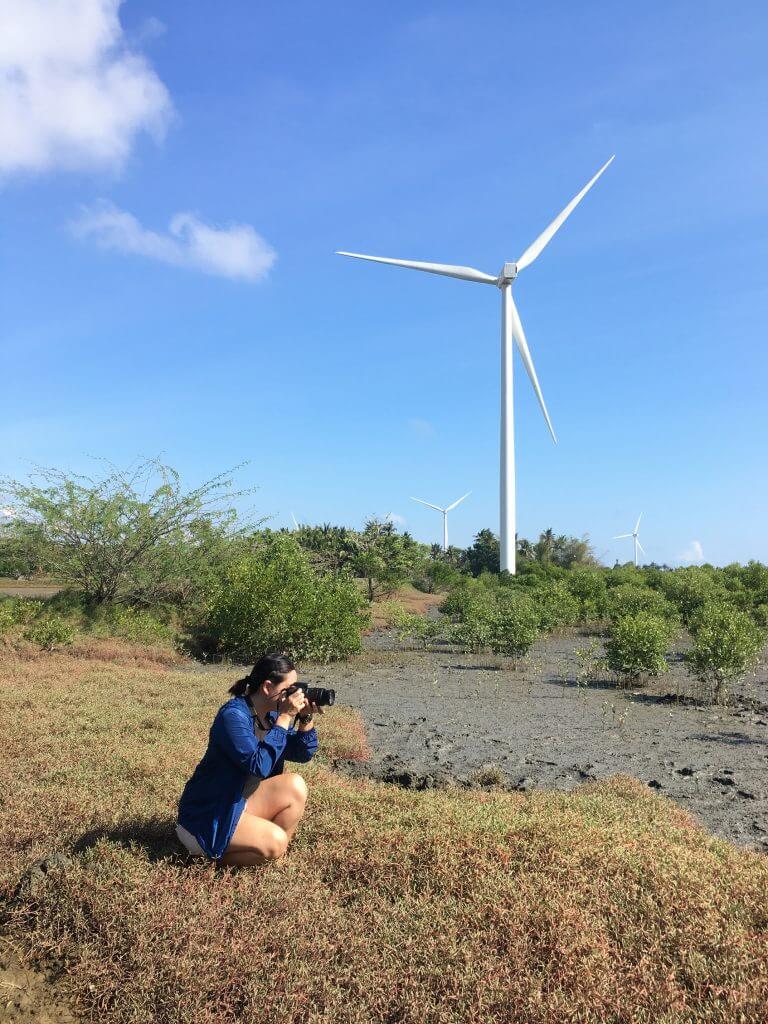
SGF Senior Science Officer, Norielle Diamante went with DENR-PENRO, Guimaras as one of the volunteer birders during the AWC 2022
Wetlands International coordinates the Asian Waterbird Census (AWC) to run parallel with other international census of waterbirds in Africa, Europe and Neotropics under the umbrella of the International Waterbird Census (IWC). It is an annual event and takes place once a year, during the second and third weeks of January. The census was initiated in 1987 in the Indian subcontinent, and has grown rapidly to cover twenty-six (26) countries of South Asia, East Asia, South East Asia, Pacific, as well as Russia Far East.
Geographic coordinates are tracked by the concerned offices to create digital maps per site, since permanent AWC sites are assigned for each region. New sites can also be visited and tracked to check the consistency of waterfowl visits in the area.
The census is primarily carried out by volunteers such as university and school staff and students, nature club members, amateur and professional ornithologists, government and non-governmental agencies related to forestry, wildlife or wetland conservation and others. Sites covered during the census include all types of natural and man-made wetlands, including, rivers, lakes, reservoirs, ponds, freshwater swamps, mangroves, mudflats, coral reefs, rice fields and sewage farms, etc. Waterbirds counted during the census include all types of waterbirds regularly encountered at wetlands, including, grebes, cormorants, pelicans, herons, egrets, storks, ibises, spoonbills, flamingoes, ducks, geese, swans, cranes, rails, jacanas, shorebirds gulls, terns. In addition, raptors, kingfishers and other wetland dependent birds are covered. Count data is entered onto standardized count forms. After collation of data, analyses and preparation of a country report, information is disseminated widely for national and local use. This information is also forwarded to Wetlands International to be collated into a regional database. Regional reports and analysis are produced and widely disseminated (DENR-BMB).
What are Waterbirds/Waterfowl?
Waterbirds/Waterfowl are species from Class Aves that are ecologically-dependent on all forms of wetlands. May it be native or migratory birds. Waterbirds include ducks, geese, terns, spoonbills, ibises, sandpipers, etc.
These birds are recorded and categorized based on their residential status. These status depends on what region the AWC is being conducted. The eight (8) residential status are:
1. Accidental (A) – This means that the bird species has not been regularly recorded in that certain site or it might be that it got lost along the way during its migration.
2. Near Endemic (NE) – Almost the entire population of the the bird species is restricted to a certain region.
3. Endemic (E) – The species occurs naturally only in a specific region.
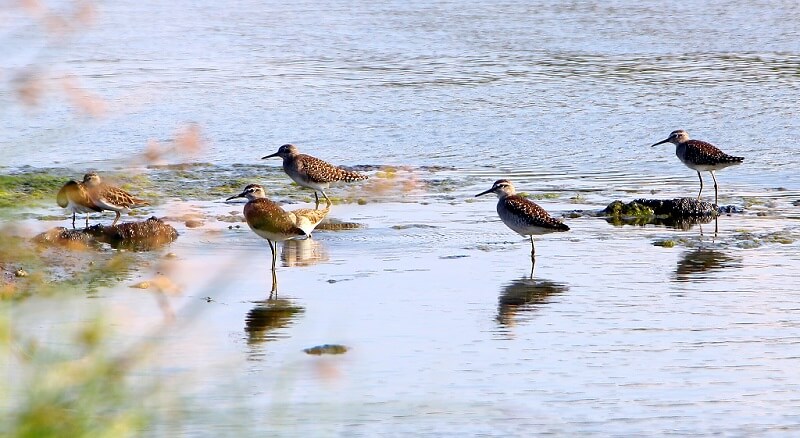
Wood Sandpiper (Tringa glareola).
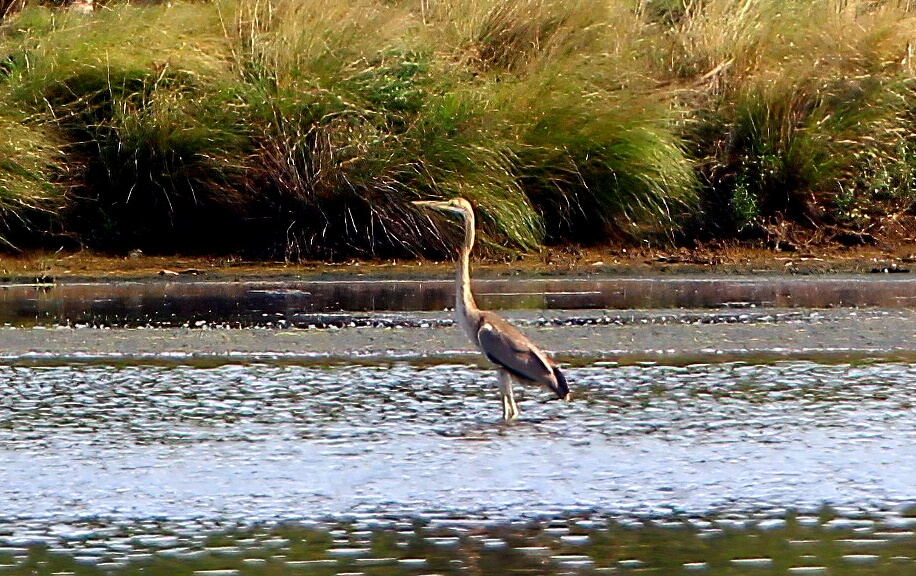
Purple Heron (Ardea purpurea)
4. Extirpated (EX) – The species is considered extinct in that specific region or area.
5. Migrant (M) – Migratory species are species that move from one habitat to another during different times of the year, as they cannot live in the same environment all year round due to seasonal limitations in factors such as food, sunlight, and temperature.
6. Resident (R) – Species that breeds and develop in that certain area or region.
7. Introduced (I) – An introduced species (also known as an exotic species) is an organism that is not native to the place or area where it is considered introduced and instead has been accidentally or deliberately transported to the new location by human activity.
8. Status Unknown (SU)
The most important part of this monitoring, is the categorization of their conservation status. The DENR bases their categorization on their DENR Administrative Order (DAO) 2019-09 with the subject: “Updated National List of Threatened Philippine Fauna and their Categories.”
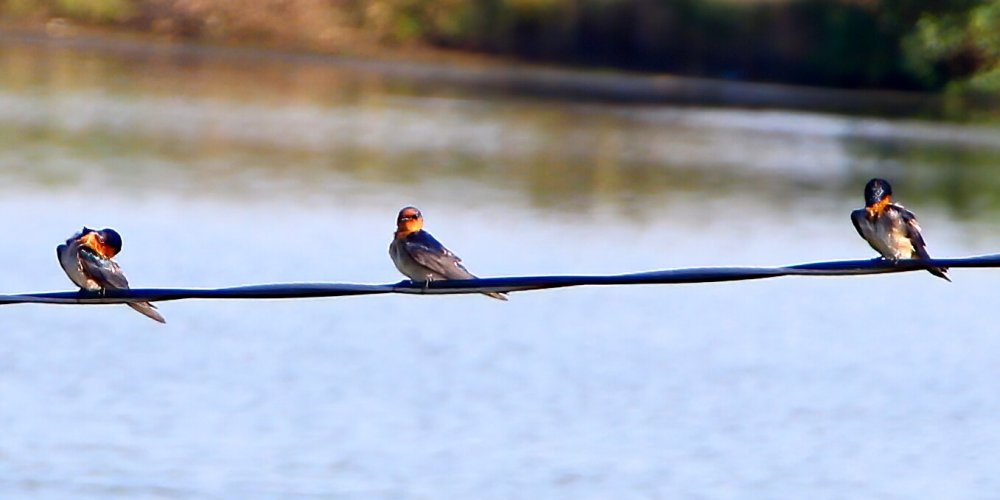
Barn swallow (Hirundo rustica)
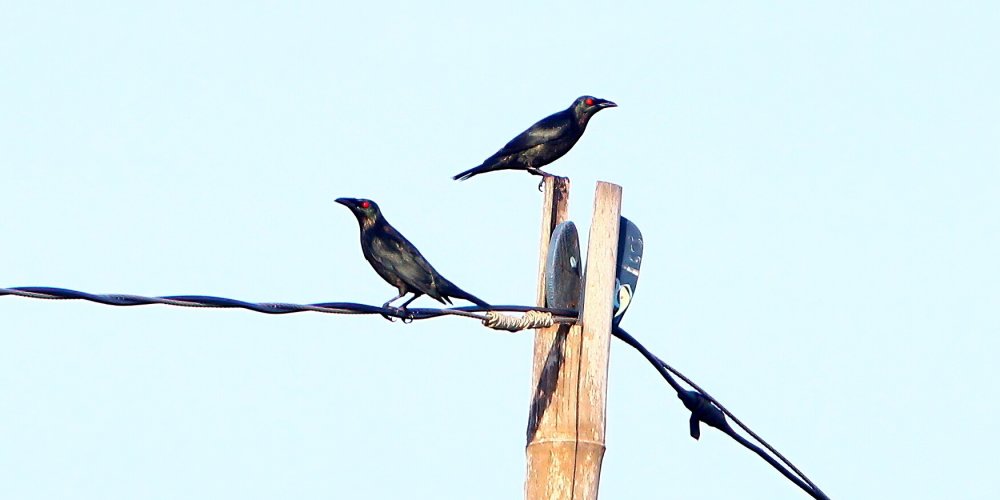
Asian glossy starling (Aplonis panayensis)
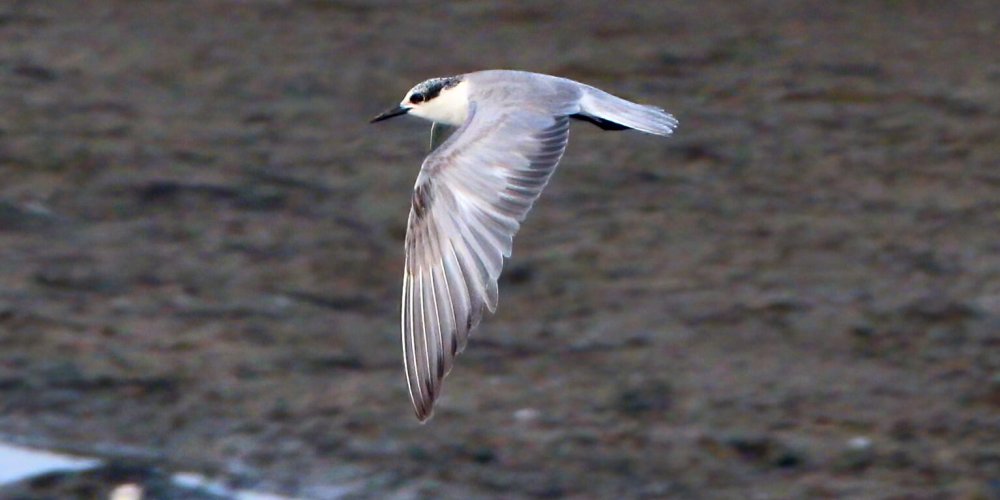
Whiskered tern (Chlidonias hybrida)
There are five categories based on DAO 2019-09, and these are:
1. Critically Endangered (CE) – Refers to a species that is facing extremely high risk of extinction in the wild in the immediate future.
2. Endangered (EN) – Refers to a species that is not critically endangered whose survival in the wild is unlikely if the causal factors continue operating.
3. Vulnerable (VU) – Refers to a species that is neither critically endangered or endangered but is under threat from adverse factors throughout its range and is likely to be moved to the endangered category in the future.
4. Other Threatened Species (OTS) – Refers to a species that is not critically endangered, endangered nor vulnerable but is under threat from adverse factors.
5. Other Wildlife Species (OWS) – Refers to all species not categorized as threatened.

A little egret (Egretta garzetta) with black-winged stilts (Himantopus himantopus).
Other than the DAO 2019-09, there is also the International Union for the Conservation of Nature (IUCN) that categorizes both flora and fauna into Extinct (EX), Extinct in the Wild (EW), Critically Endangered (CR), Endangered (EN), Vulnerable (VU), Near Threatened (NT), Least Concern (LC) and Data Deficient (DD). IUCN’s data is for the population of each species globally. There is also the CITES or the Convention on International Trade in Endangered Species of Wild Fauna and Flora. It is an international agreement between governments and aims to ensure that international trade in specimens of wild animals

Pied triller (Lalage nigra)

Little egret (Egretta garzetta)
and plants does not threaten the survival of the species. They categorize each species into three (3) Appendices, with Appendix I as the species that most likely to be extinct.
Why the Asian Waterfowl Census is Conducted?
The census has six major objectives: (Based on BMB on Asian Waterfowl Census)
1. Providing the basis for estimates of waterbird populations;
2. Monitoring changes in waterbird numbers and distribution by regular, standardised counts of representative wetlands;
3. Improving knowledge of little-known waterbird species and wetland sites;
4. Identifying and monitoring (networks of) sites that are important for waterbirds in general and, more specifically, identifying and monitoring sites that qualify as Wetlands of International Importance under the Ramsar Convention on Wetlands;
5. Providing information on the conservation status of waterbird species, for use by international agreements;
6. Increasing awareness of the importance of waterbirds and their wetland habitats at local, national and international levels.
The AWC also aims to build and strengthen national networks of enthusiastic volunteers and facilitate their training.
The Conduct of AWC 2022
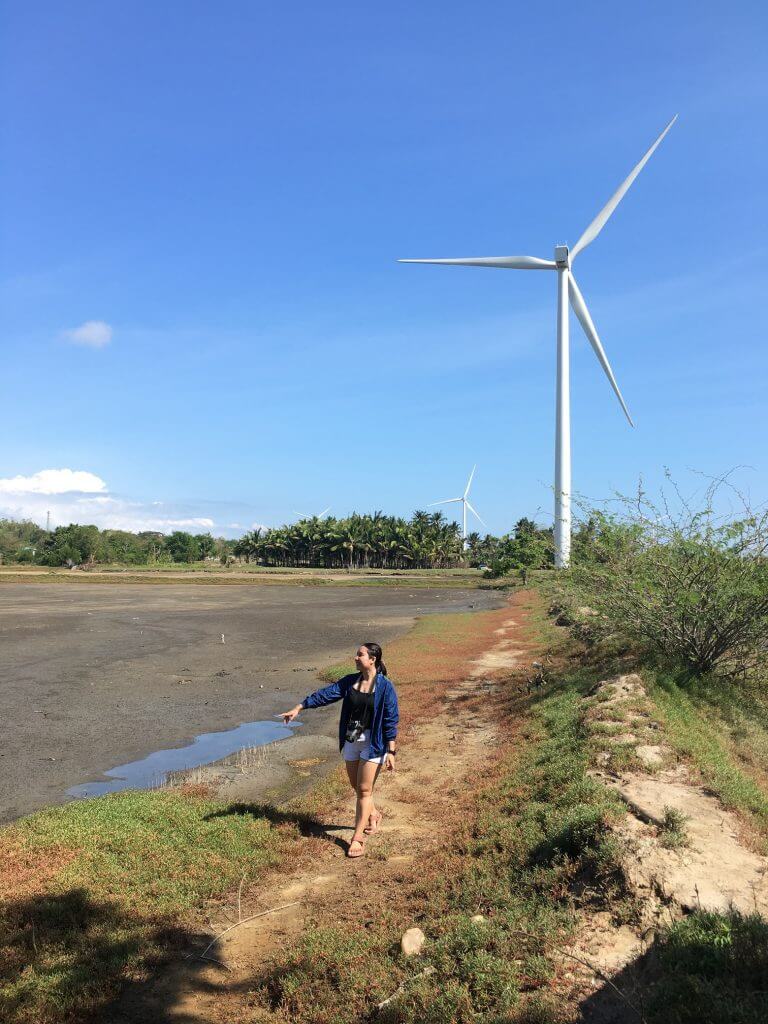

This year, the DENR Biodiversity Management Bureau (BMB) released the schedule for the conduct of AWC within the dates of January 1-16, 2022. The DENR-PENRO, Guimaras posted on a social media site about needing volunteers for the waterbirds monitoring. I joined the waterfowl census along with two other volunteers from the Wildlife Conservation and Protection Society (WCPS) in which I am also a member.
The DENR-PENRO, Guimaras schedule was last January 4, and 11-14, 2022. There were eight (8) permanent sites throughout the Province of Guimaras: Hoskyn, Jordan; Getulio, Buenavista; Suclaran, San Lorenzo; Sabang and Alegria, Sibunag; and Poblacion, San Antonio, and Taklong Island National Marine Reserve (TINMR), Nueva Valencia.
The DENR-PENRO staff with one (1) representative from the DENR Region 6 Office, and three (3) volunteers covered at least two (2) sites per day. We have to wake up as
early as 4:00 in the morning to prepare and make sure that we’ll be on site before 6:00 in the morning, because that is the usual feeding time of the waterbirds. Our group split into two (2) groups to go to each target sites. Spotting scopes for counting and DSLR cameras for documentation were prepared. The best time for bird count is during low tide, where birds can still walk on waters to feed. The group spent two (2) hours or more for each site to count each species that feed and fly in the area.
Monitoring waterbirds and counting them through the spotting scopes is tricky since the subjects are always in motion. It’s like viewing a microorganism under a microscope, but the difference is that after you focus on your subject and locked the knobs for better viewing, your subject is gone. That’s why binoculars are also used to count the birds in flight. I was assigned for documentation and was given one of the office’s DSLR camera to use. The people assigned for counting would find shade to sit and setup their spotting scope, while I go around the site under the scorching heat of the sun to capture photos of birds. And by going around, I don’t mean by just walking confidently under the sun, but actually crouching behind tall grass to keep from the birds’ sight.
Birds are really quick when it comes to sensing movements around them. They’re not oblivious to what’s happening around them. Rather, they are very keen and sharp. Once they see you in their peripheral vision, they will fly right away, leaving you with no picture, and disappointment.
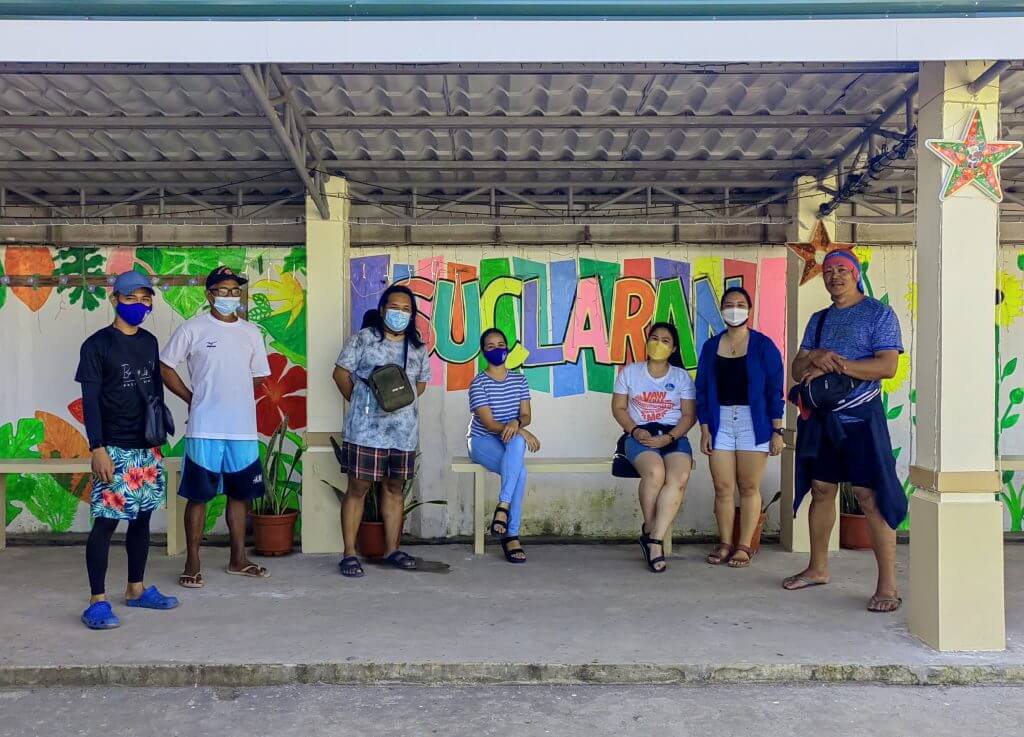
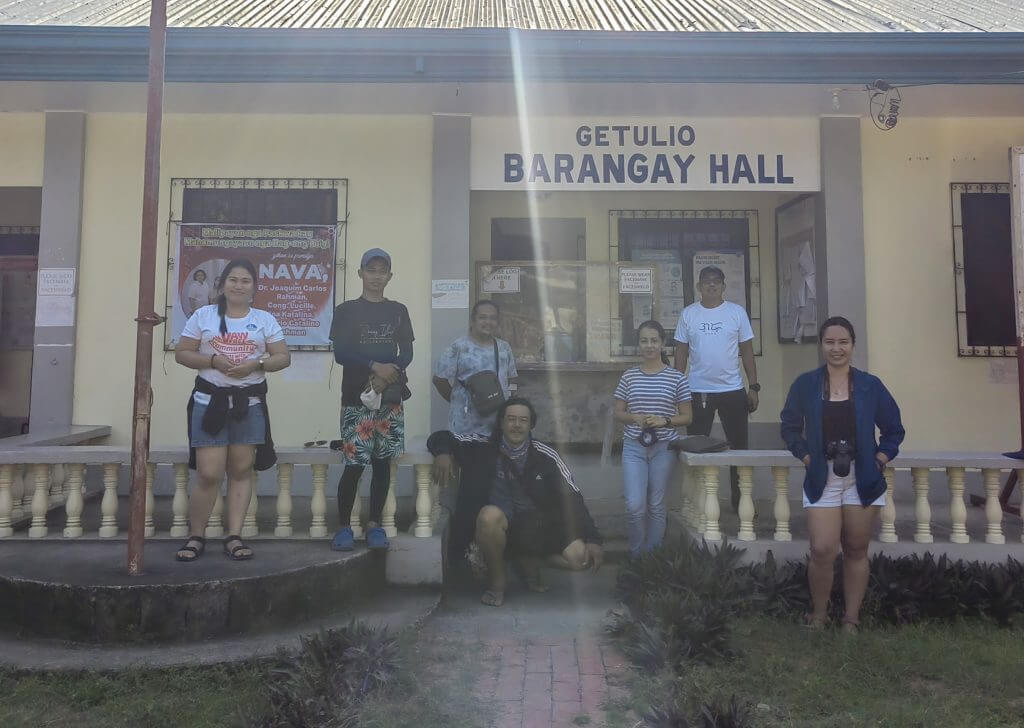
The AWC team giving a courtesy call to the Local Government Units (LGUs).
One thing I like about being on field, is that I get to interact with nature. And that usually means interacting with them in a subtle way. With my experience during field work, I learned that I should learn how to hide from the animals’ sight. Crawling on the ground is not new to me. Especially during cave assessments. If you want to get really good pictures of wildlife and nature, you should be comfortable with crawling and hiding.
The AWC 2022 Results
The total waterbird population count was one thousand eight hundred fifty-six (1,856) individuals, with the Whiskered Terns (Chlidonias hybrida) as the highest count (401), followed by the Little Egrets (Egretta garzetta) (361), and Black-winged Stilt (Himantopus himantopus) with 189 counts. Aside from the waterbirds, four hundred eighty-two (482) Passerine birds were also counted, making the total bird count to two thousand three hundred thirty-eight (2,338).
Threats in each site were also recorded such as bird traps and plastic wastes.
Regular conduct of AWC will ensure that the waterbirds and passerine birds are protected and conserved, as well as making sure that the wetlands are safe from threats and destruction, especially from humans.
Written by: Senior Science Officer, Norielle Diamante (See profile)
